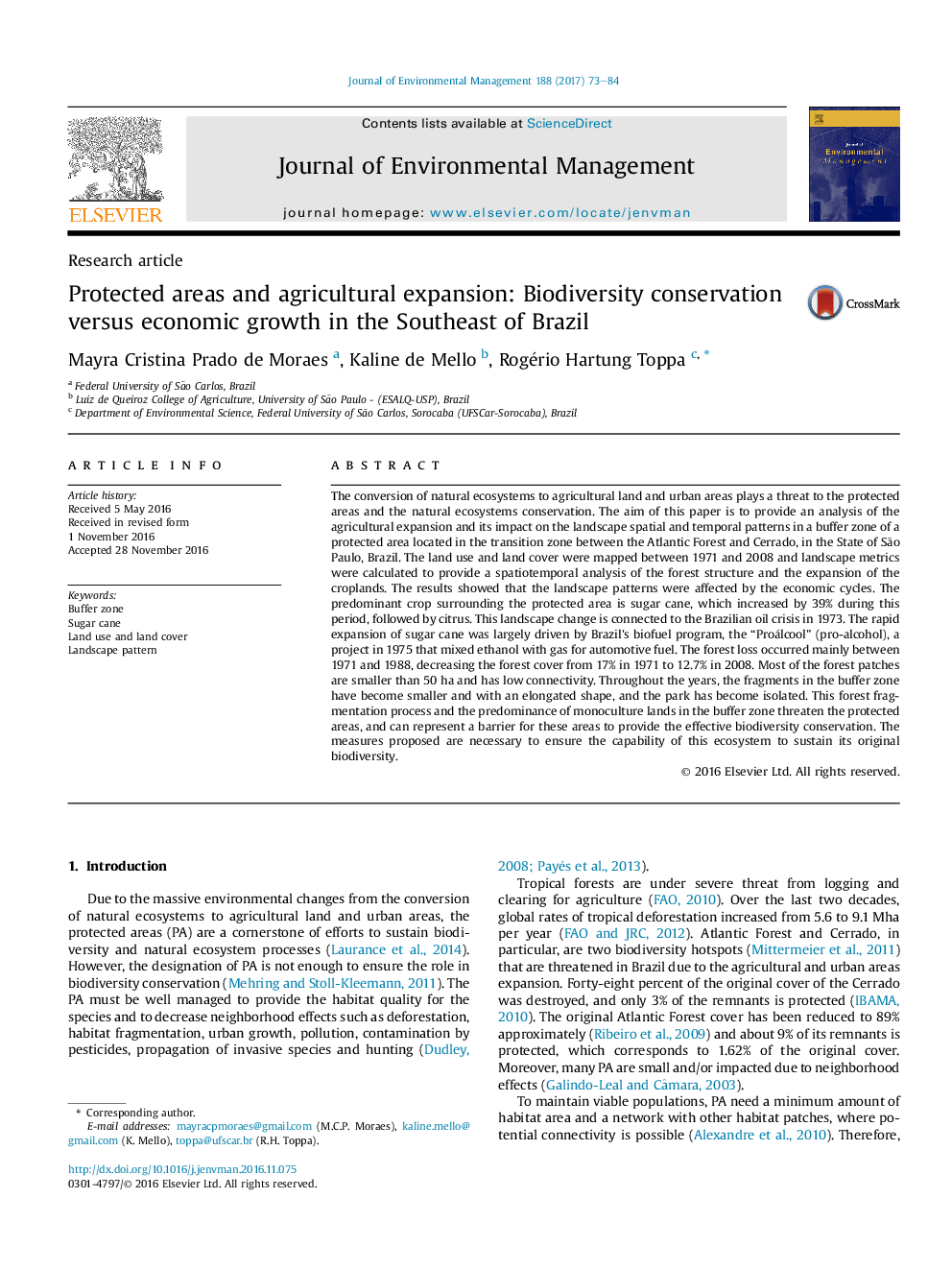| کد مقاله | کد نشریه | سال انتشار | مقاله انگلیسی | نسخه تمام متن |
|---|---|---|---|---|
| 5117126 | 1485227 | 2017 | 12 صفحه PDF | دانلود رایگان |
عنوان انگلیسی مقاله ISI
Protected areas and agricultural expansion: Biodiversity conservation versus economic growth in the Southeast of Brazil
ترجمه فارسی عنوان
مناطق حفاظت شده و توسعه کشاورزی: حفظ تنوع زیستی در مقایسه با رشد اقتصادی در جنوب شرقی برزیل
دانلود مقاله + سفارش ترجمه
دانلود مقاله ISI انگلیسی
رایگان برای ایرانیان
کلمات کلیدی
منطقه حائل، نیشکر، استفاده از زمین و پوشش زمینی، الگوی چشم انداز،
موضوعات مرتبط
مهندسی و علوم پایه
مهندسی انرژی
انرژی های تجدید پذیر، توسعه پایدار و محیط زیست
چکیده انگلیسی
The conversion of natural ecosystems to agricultural land and urban areas plays a threat to the protected areas and the natural ecosystems conservation. The aim of this paper is to provide an analysis of the agricultural expansion and its impact on the landscape spatial and temporal patterns in a buffer zone of a protected area located in the transition zone between the Atlantic Forest and Cerrado, in the State of São Paulo, Brazil. The land use and land cover were mapped between 1971 and 2008 and landscape metrics were calculated to provide a spatiotemporal analysis of the forest structure and the expansion of the croplands. The results showed that the landscape patterns were affected by the economic cycles. The predominant crop surrounding the protected area is sugar cane, which increased by 39% during this period, followed by citrus. This landscape change is connected to the Brazilian oil crisis in 1973. The rapid expansion of sugar cane was largely driven by Brazil's biofuel program, the “Proálcool” (pro-alcohol), a project in 1975 that mixed ethanol with gas for automotive fuel. The forest loss occurred mainly between 1971 and 1988, decreasing the forest cover from 17% in 1971 to 12.7% in 2008. Most of the forest patches are smaller than 50 ha and has low connectivity. Throughout the years, the fragments in the buffer zone have become smaller and with an elongated shape, and the park has become isolated. This forest fragmentation process and the predominance of monoculture lands in the buffer zone threaten the protected areas, and can represent a barrier for these areas to provide the effective biodiversity conservation. The measures proposed are necessary to ensure the capability of this ecosystem to sustain its original biodiversity.
ناشر
Database: Elsevier - ScienceDirect (ساینس دایرکت)
Journal: Journal of Environmental Management - Volume 188, 1 March 2017, Pages 73-84
Journal: Journal of Environmental Management - Volume 188, 1 March 2017, Pages 73-84
نویسندگان
Mayra Cristina Prado de Moraes, Kaline de Mello, Rogério Hartung Toppa,
